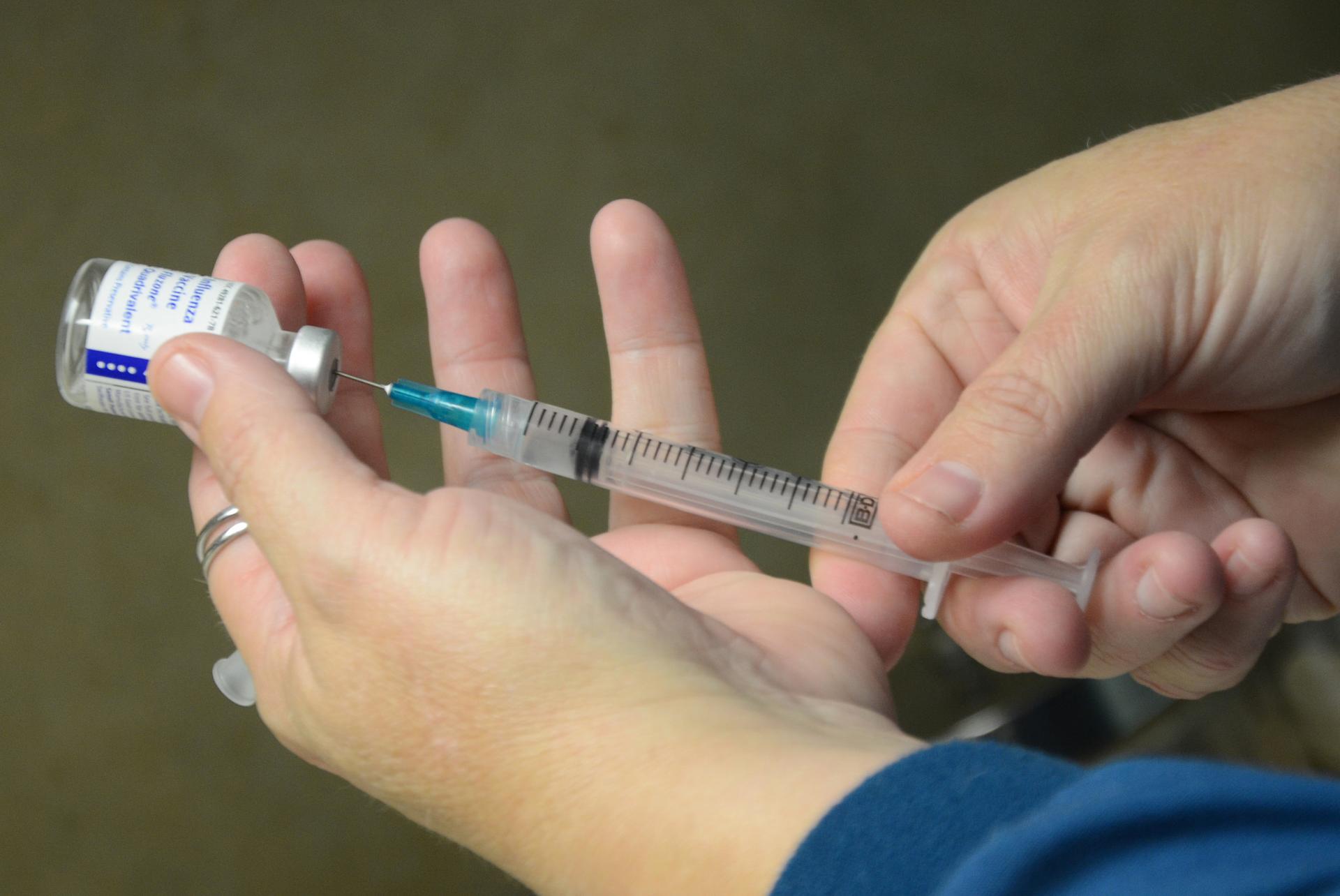Scientists have developed a bandagelike patch that could painlessly replace the flu shot
A nurse prepares a flu shot in 2014. A new microneedle patch could someday replace conventional vaccine injections — and allow you to vaccinate yourself at home.
Instead of heading to the doctor for a painful flu shot, what if you could someday vaccinate yourself at home — just by applying a patch to your skin?
Researchers at Emory University and the Georgia Institute of Technology are working to make that a reality. They’ve developed a small, bandagelike patch that can dispense a flu vaccine into your skin using a hundred or so microneedles. Its creators described the first human trials recently in The Lancet.
“So, in the clinical trial that we just recently completed, one group of people received the flu vaccine patch administered by a nurse. But another group of people did it themselves, and they did it just as well as the trained nurse did,” says Mark Prausnitz, a co-author of the study and professor of chemical and biomolecular engineering at Georgia Tech.
A key feature of the patch is that the microneedles are water-soluble, Prausnitz explains. As the needles dissolve in your skin, they release encapsulated vaccine — and leave users with just a smooth, inchwide patch to discard. “There's nothing sharp left on it, it can't be reused and it doesn't pose any more danger than a Band-Aid,” he says.
The patch, which uses a commercially available vaccine, is also stable without refrigeration. “We've gone out to one year now at 40 degrees Celsius, and the vaccine is still fully potent,” Prausnitz says. As a result, he explains, it could be mailed out to patients without an ice pack, in just a small padded envelope.
In the phase one clinical trial, researchers focused on testing the patch’s safety for humans, not its efficacy. “But we did measure the immune response after giving the vaccine with the various different methods,” Prausnitz says. “And what we found is that vaccination with this microneedle patch was just as good as vaccination by the conventional injection, by a few different measures of the immune response.”
What’s more, patients like the patch better than conventional vaccine methods. Prausnitz says it’s not painful to apply — it feels a bit like pressing Velcro against your skin. And according to a National Institutes of Health press release, more than 70 percent of study participants would prefer the patch to getting a flu shot or using a nasal vaccination spray.
Prausnitz says there’s been some pushback from the health care industry about a vaccine that doesn’t require a doctor’s visit. “It's been one of just general concern that vaccines are given in a health care setting and it's … unusual for a vaccine to be taken out of it,” he says.
“But at the same time, if we think of the various drugs we can buy over the counter — and how many of them can actually be quite dangerous if used inappropriately — and compare that to a flu vaccine, the flu vaccine is just so much safer.”
The research team is also working on patch vaccines for polio, measles and rubella — which Prausnitz envisions could eventually be administered door to door by health workers.
So far, the flu vaccine is furthest along. “And that, we hope, is going to be available for patients to use within five years,” Prausnitz says.
This article is based on an interview that aired on PRI's Science Friday with Ira Flatow.
